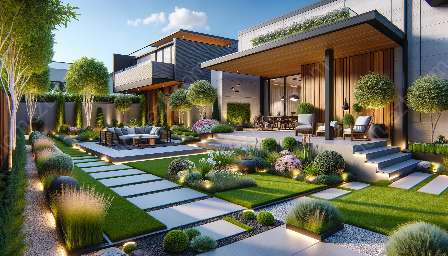Landscape design is the art of planning and arranging outdoor spaces for aesthetic and functional purposes. It involves creating visually appealing landscapes that enhance the natural beauty of an area while also providing practical benefits. In this comprehensive guide, we will explore the principles of landscape design, its compatibility with landscaping, and how it can transform your yard and patio into inviting and enjoyable spaces.
Understanding Landscape Design
At its core, landscape design is about harmonizing the natural features of a site with human-made elements to create a cohesive and pleasing outdoor environment. It involves a combination of artistic creativity, technical knowledge, and horticultural expertise to design spaces that are both beautiful and functional.
The Elements of Landscape Design
There are several key elements that form the foundation of landscape design:
- 1. Line: The visual movement and flow within a landscape, created by paths, borders, or plant groupings.
- 2. Form: The shape and structure of objects within the landscape, such as trees, shrubs, and hardscape features.
- 3. Texture: The surface quality of plant materials and hardscape elements, which adds depth and visual interest.
- 4. Color: The palette of hues used in plants, flowers, and materials to evoke specific moods and create focal points.
- 5. Scale: The relative size and proportion of elements in the landscape, which determines the overall visual impact.
The Principles of Landscape Design
In addition to the key elements, several principles guide the successful implementation of a landscape design:
- 1. Unity: Creating a sense of cohesion and interconnection among various elements in the landscape.
- 2. Balance: Achieving visual equilibrium through the distribution of elements and their visual weight.
- 3. Proportion: Establishing a proper relationship between the sizes of different elements in the landscape.
- 4. Rhythm: Using repetitive patterns or contrasting elements to create a sense of movement and visual interest.
- 5. Harmony: Blending together all the components of the landscape to create a unified and harmonious composition.
- 1. Define Functional Zones: Create designated areas for dining, relaxation, and recreation to maximize the utility of your yard and patio.
- 2. Introduce Planting Beds: Add variety and color to your outdoor spaces by incorporating flower beds, shrubs, and trees to create a lush and inviting atmosphere.
- 3. Incorporate Hardscape Features: Enhance the visual interest of your patio by integrating elements such as pathways, retaining walls, or decorative structures.
- 4. Embrace Outdoor Living: Extend the functionality of your patio by incorporating amenities like outdoor kitchens, fire pits, or seating areas to create an inviting and comfortable outdoor retreat.
Landscape Design and Landscaping
While landscape design focuses on the overall layout and aesthetics of outdoor spaces, landscaping involves the physical implementation of those designs through the installation of plants, structures, and other elements. Landscaping is the practical application of landscape design concepts, often carried out by professionals to bring a design plan to life.
How to Incorporate Landscape Design into Your Yard and Patio
Transforming your yard and patio with thoughtful landscape design can significantly enhance their visual appeal and functionality. Consider the following ideas to incorporate landscape design into your outdoor spaces:
Bringing Your Vision to Life
Whether you're starting from scratch or looking to revitalize your existing outdoor spaces, landscape design offers a multitude of possibilities to transform your yard and patio into stunning and enjoyable environments. By understanding the principles of landscape design and how it aligns with landscaping, you can unleash your creativity and personalize your outdoor living areas to reflect your unique style and preferences.


